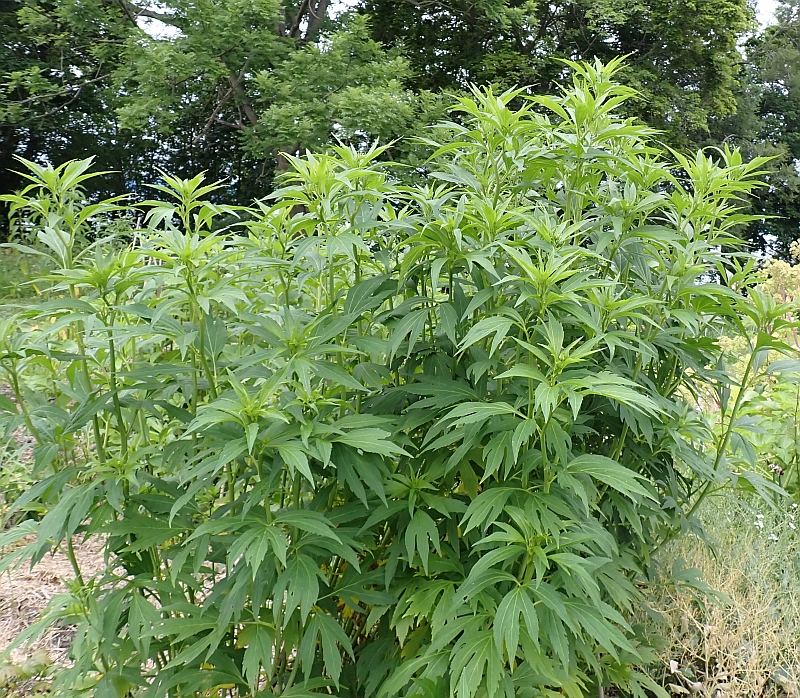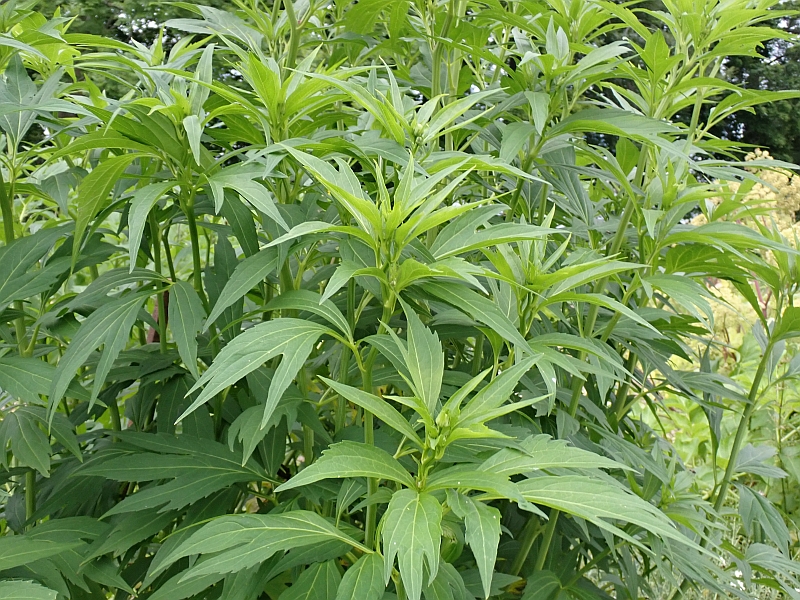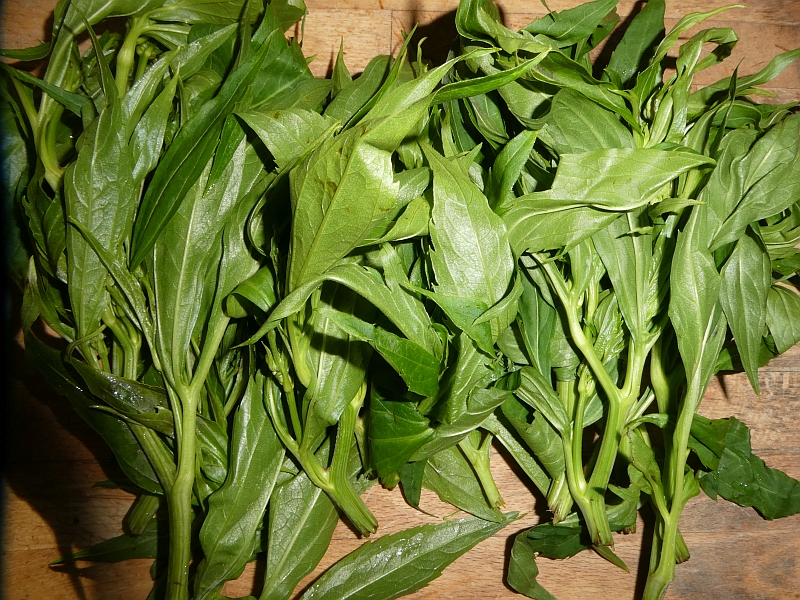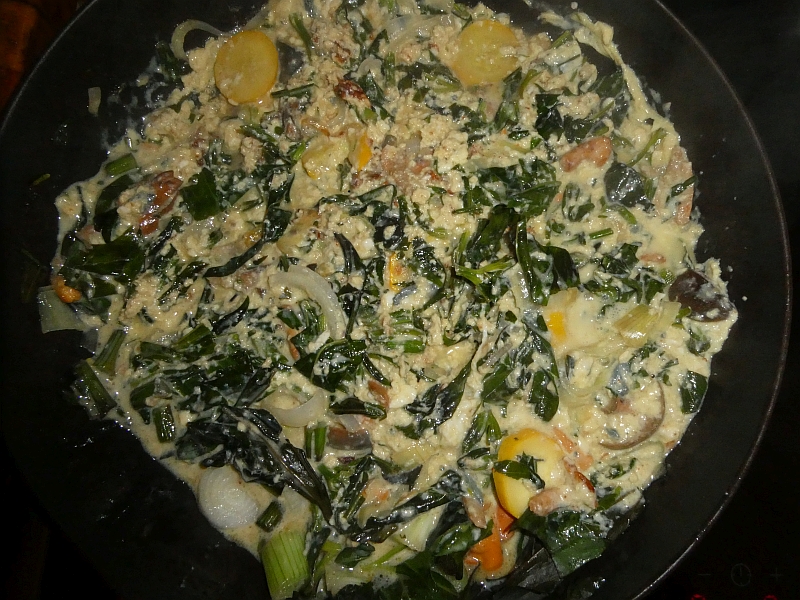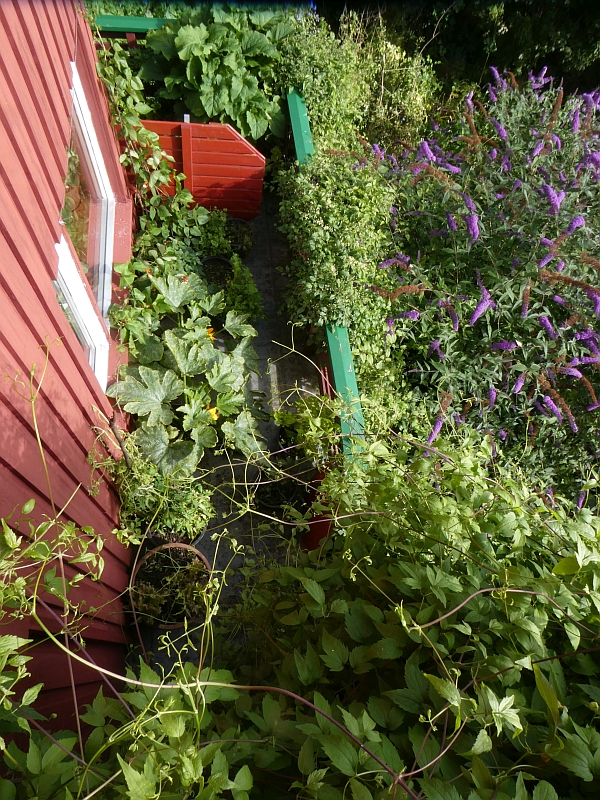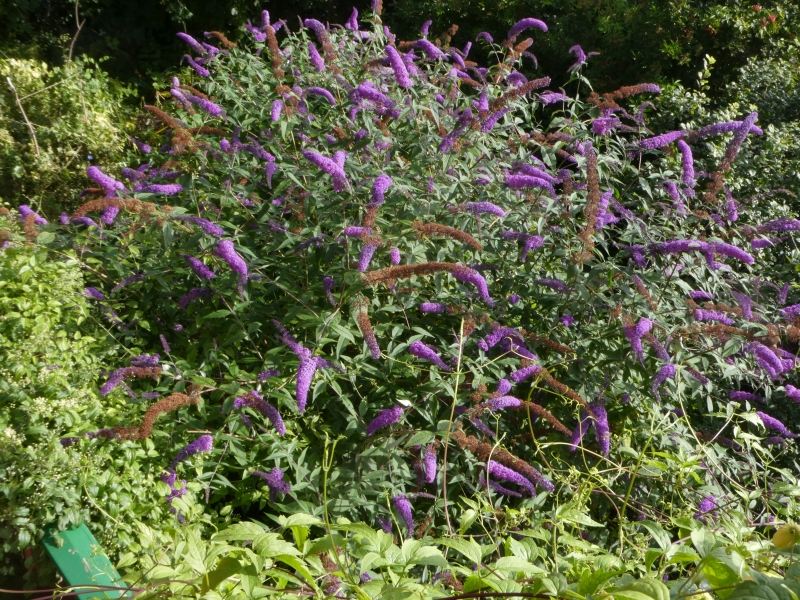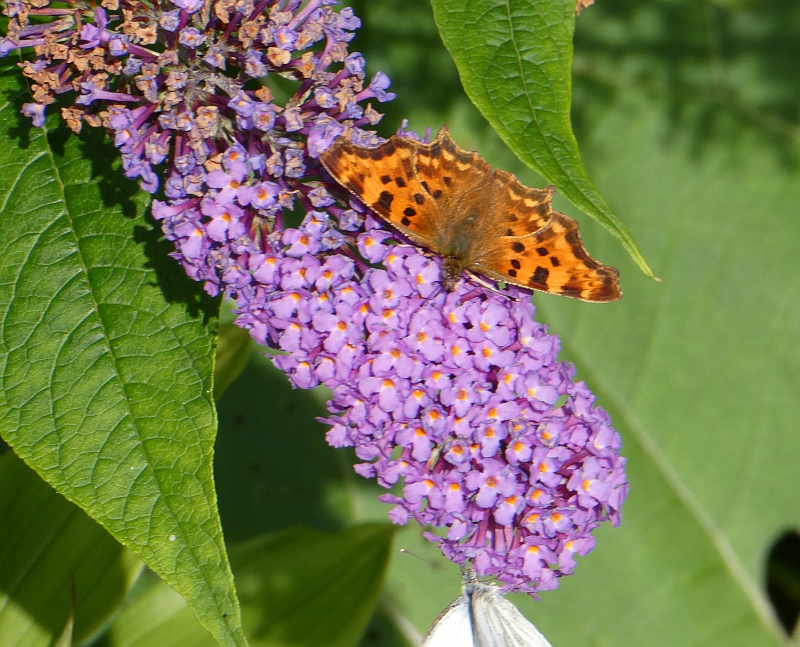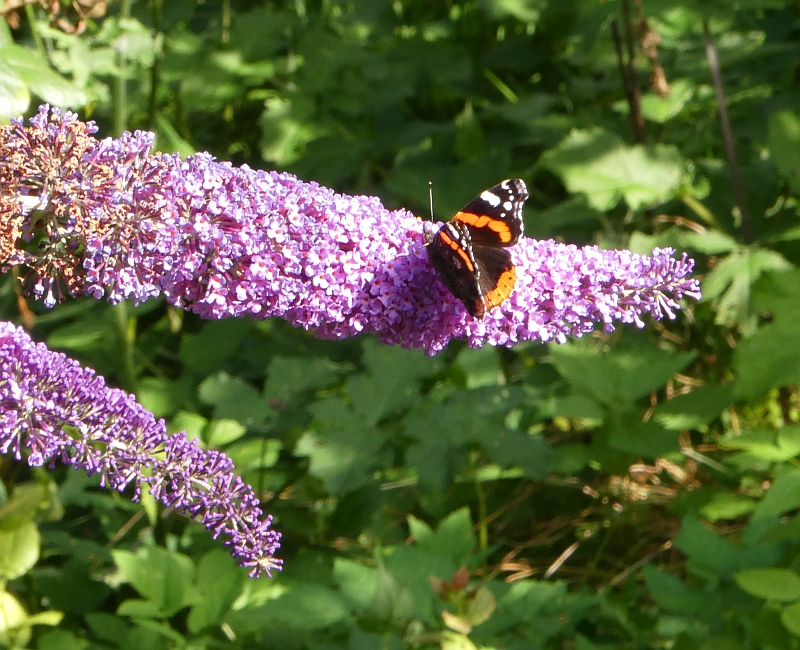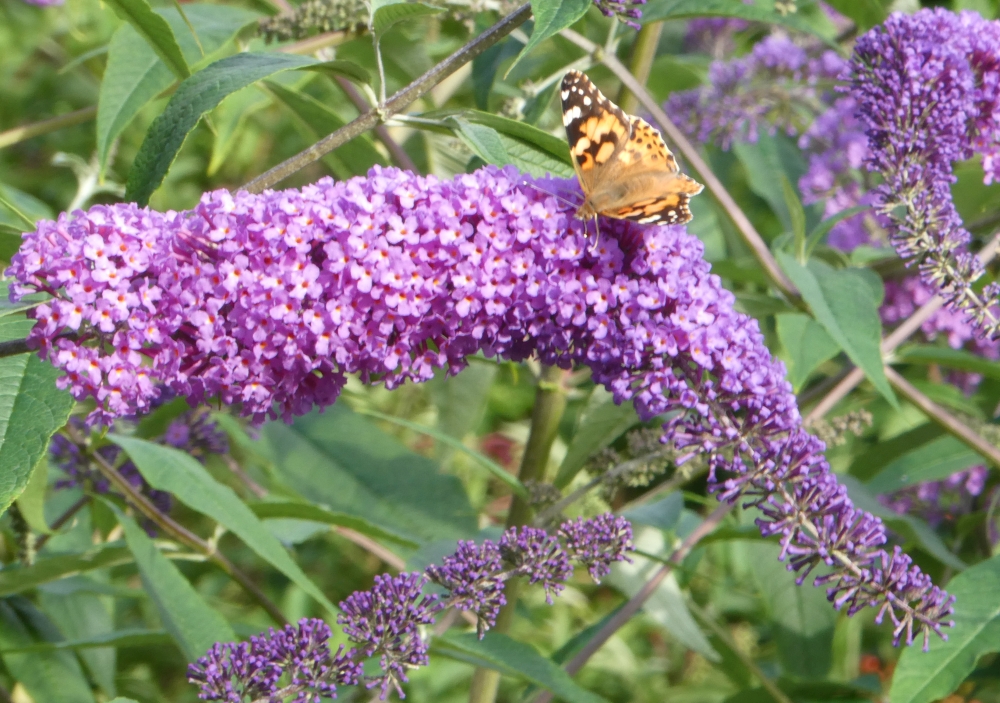One of the few plants in my garden which isn’t edible is my large Buddleja davidii (butterfly bush / sommerfuglbusk), a wonderful entomental (loved by insects and an ornamental appreciated by Homo sapiens too!). It is strategically placed beneath the balcony so that I can look down from above. As chance has it, I had also planted old man’s beard / tysk klematis (Clematis vitalba) to climb up onto the balcony. The latter is equally popular with late summer pollinators, mainly hoverflies. So this is one of the best spots for watching and photographing the local insect life. However, after coming into flower 2-3 weeks ago there were no butterflies, but a rare 20C day brought them out and both painted lady (tistelsommerfugl; the first since the bumper year two years ago and only the second recorded this summer in Trøndelag county), red admiral (admiral) and comma / hvit C were out yesterday! But it’s at night that the butterfly bush is covered with pollinators, notably an estimated 200 large yellow underwing moths (hagebåndfly)
Monthly Archives: August 2022
Sweet Chestnut at 63.4N!
About 20 years ago I sowed some sweet chestnuts that I found in Southern England. One germinated and surpisingly to me it survived the first few winters. I therefore planted it out at the bottom of the garden. However, this area of the garden was overplanted and it became survival of the fittest (I didn’t really believe I would ever get chestnuts!)… It continued to grow slowly and survived one of our coldest winters ever around 2011 with only the tips freezing out (the whole root system down to the bed rock would have been frozen solid for 3-4 months). Seeing the exciting possibility of growing perhaps the furthest north chestnuts in the world, I gave the tree more space and planted a second tree (Marigoule) next to it (one tree can produce nuts, but yields are better with two). Then 3-4 weeks ago I noticed that the now about 5m high tree had produced a few male and female flowers which were opening at about the same time and I hope I now have a couple of chestnuts developing. However, it’s debatable if they will have time to mature in what has been a really cold summer here at 63.4 deg. N!
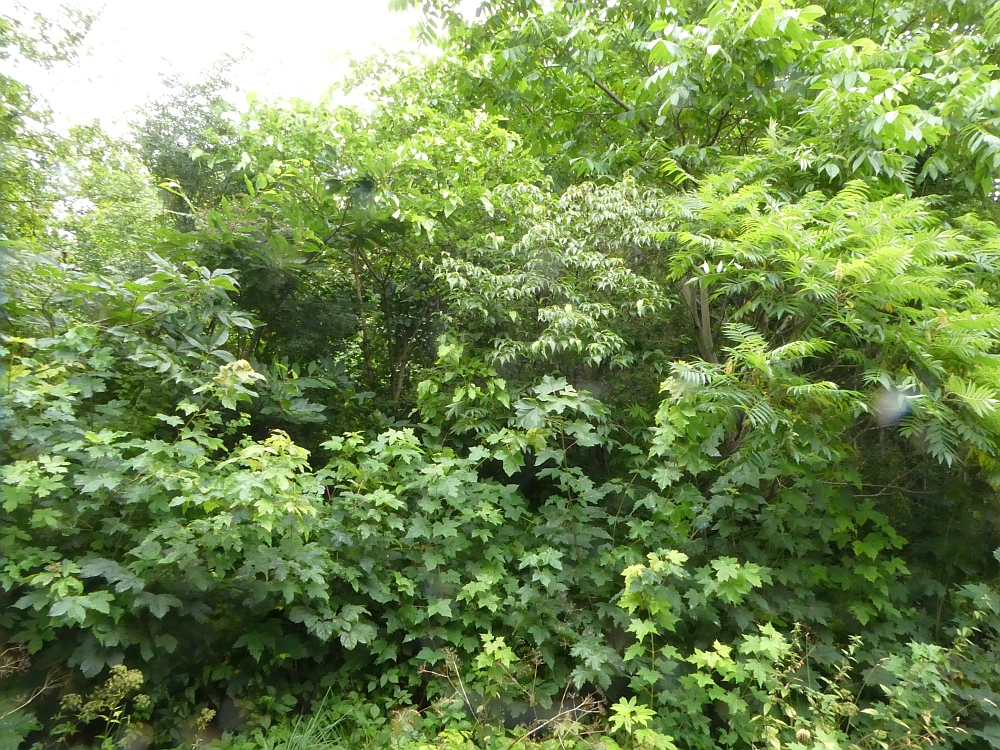

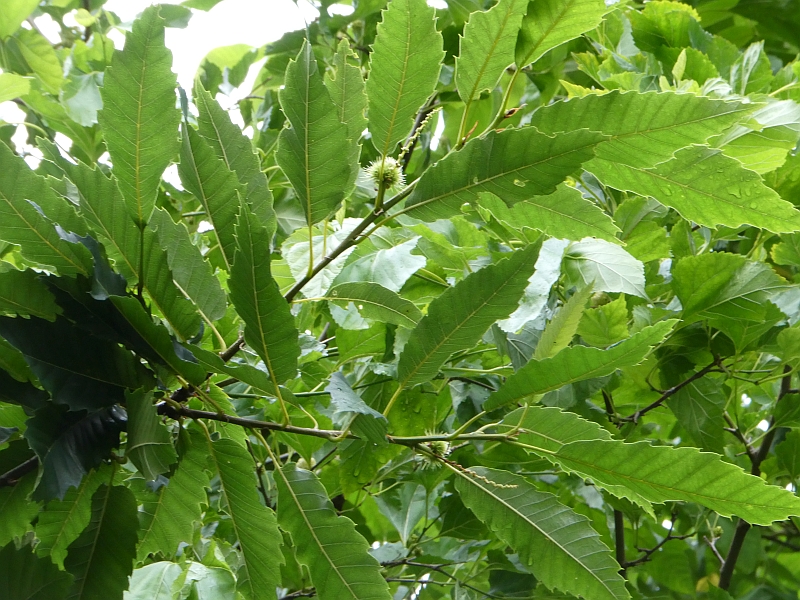
Sochan tops Mediterranean style
Thanks to Alan Bergo (@foragerchef) for reminding me to try sochan tops. This is Rudbeckia laciniata (cut-leafed coneflower) which in the double form is one of the most popular garden ornamentals here in Norway over the last 100 years and a plant that has been commercialised as a farm vegetable over recent years in Korea. I’d previously only eaten the spring shoots, but I was equally impressed by the tops which I used simply cooked with onion, garlic and yellow zucchini from the garden, various fungi picked in the woods (saffron milkcap/matriske; hedgehog fungus / piggsopp and chantarelles / kantarell) and scrambled with eggs with a little chilim added (a classic way for preparing wild edibles in the Mediterranean countries. See the pictures below.
See other posts on this great vegetable which was introduced to me in one of Samuel Thayer’s books:
Appalachian Greens
Cherokee Pizza 